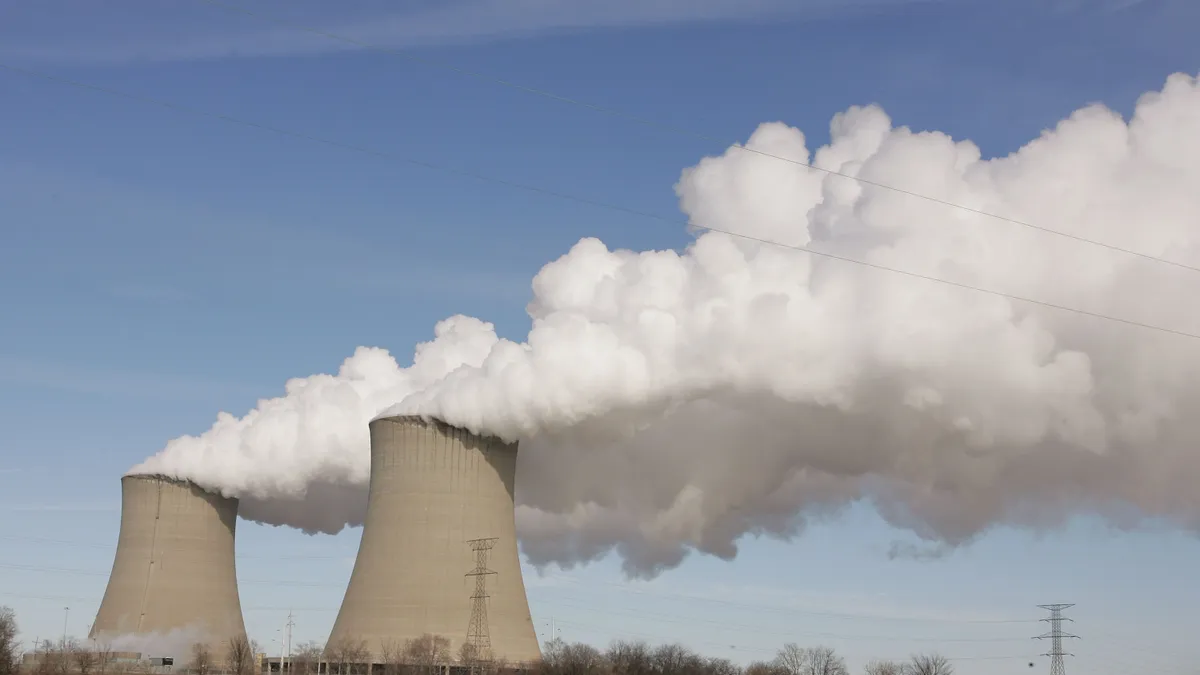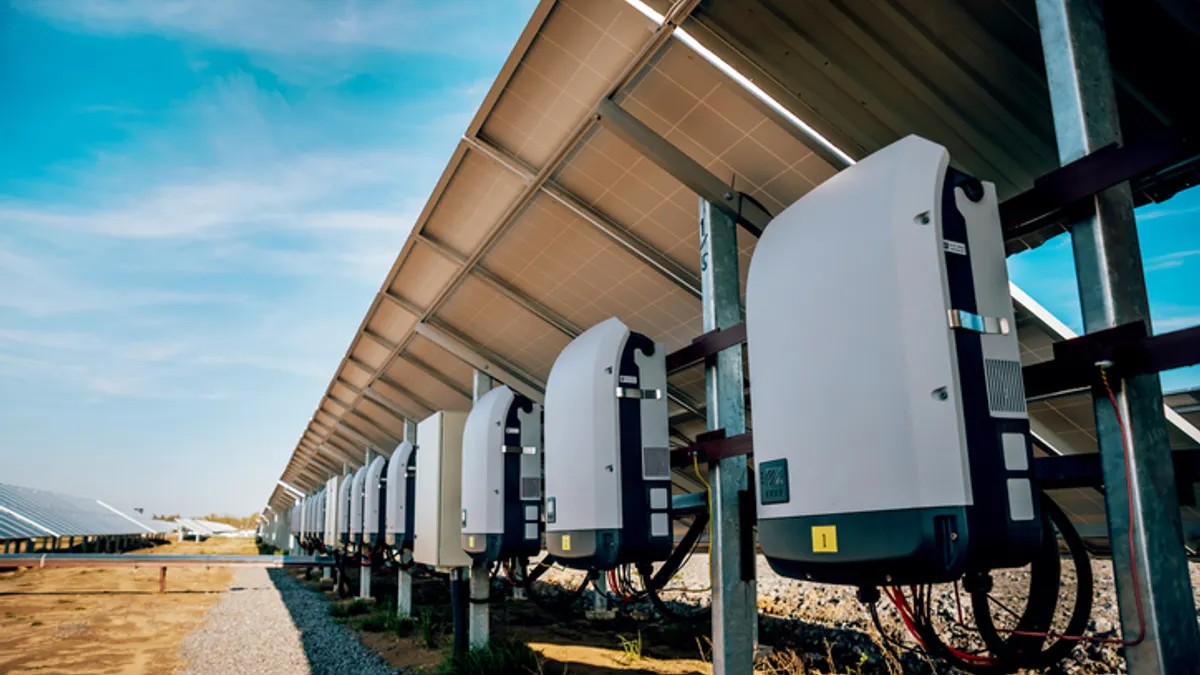Dive Brief:
- Exelon Generation said Monday it is preparing to refuel its Byron and Dresden nuclear plants after the Illinois Senate passed legislation that will provide $700 million in subsidies for the struggling units, which the power giant was poised to close.
- The nuclear subsidies were part of a much broader climate change bill that has now cleared both legislative chambers in Illinois and is expected to be signed into law by Gov. J.B. Pritzker, D, a strong supporter. The bill provides hundreds of millions in subsidies for the renewable energy sector and to ease the transition in communities where coal or gas-fired plants will eventually be shutting down, said David Kolata, executive director of the Citizens Utility Board in Illinois.
- The legislation provides a roadmap for sunsetting the state’s coal-fired plants, while setting a target of 40% renewable energy for the state’s power sector by 2030, on the way to a goal of carbon-free generation by 2045. That makes Illinois the first state in the Midwest to set such an aggressive goal, Kolata said.
Dive Insight:
The Illinois Senate’s 37-17 passage of the The Climate and Equitable Jobs Act resolves an 11th hour standoff that came close to shuttering the two nuclear plants and throwing a monkey wrench into the Midwestern state’s push to decarbonize its electric grid.
Pritzker had objected to an earlier version of the bill for not moving fast enough to address emissions by coal-fired plants.
While a prior version of the bill, passed by the Senate Sept. 1, called for the municipally-owned Prairie State coal plant, the state’s largest carbon emitter, to shut down by 2045, there was no requirement for the facility to reduce emissions before then.
The revised version, which the Senate passed on Monday, calls for Prairie State, and CWLP Dallman in Springfield, another municipally-owned coal-fired power plant, to cut carbon emissions 45% by 2038.
The standoff over coal-fired plant emissions came close to triggering a shutdown by Exelon of its Byron and Dresden reactors. The power company had threatened to shut down the plants on Sept. 13 if the climate bill, with its hundreds of millions in subsidies for the nuclear sector, failed to pass.
The closure of the plants, in turn, would have thrown into disarray Illinois’ drive to decarbonize its electric grid, with nuclear plants producing more than 50% of Illinois' electric power.
"This new policy offers a better future for the employees who have run these plants … the plant communities … and all Illinoisans eager to build a clean energy economy that works for everyone," said Christopher Crane, president and CEO of Exelon, in a press release.
The legislation is the product of years of work, with discussion and debate around the climate bill having first begun four years ago, Kolata noted.
The Illinois energy bill provides $340 million in subsidies for renewable energy, and $180 million in support for communities faced with the loss of a major employer with the wind down of coal or gas-fired plants across the state, Kolata said. Energy efficiency and savings provisions could help defray much of those costs, he added.
"We got it across the finish line – it only took four years,” Kolata said. "It’s a very big deal. It makes Illinois a national leader.”
Environmental groups, including the Natural Resources Defense Council and the Union of Concerned Scientists (UCS), were quick to praise the bill.
Jessica Collingsworth, lead energy policy analyst and advocate for UCS’s Midwest office, pointed to a provision committing tens of millions of dollars over the coming decade to electric transportation, with nearly half dedicated to low-income and environmental justice communities. Tens of millions more are set aside for workforce and contractor development initiatives, including a program to train formerly incarcerated individuals for clean energy jobs and for a nonprofit green bank called the Clean Energy Jobs and Justice Fund, she said.
The bill also dedicates $50 million for a program that helps encourage solar installations in low-income communities, according to Collingsworth.
"It is definitely the highest buildout of the renewable energy industry in the Midwest,” Collingsworth said.














